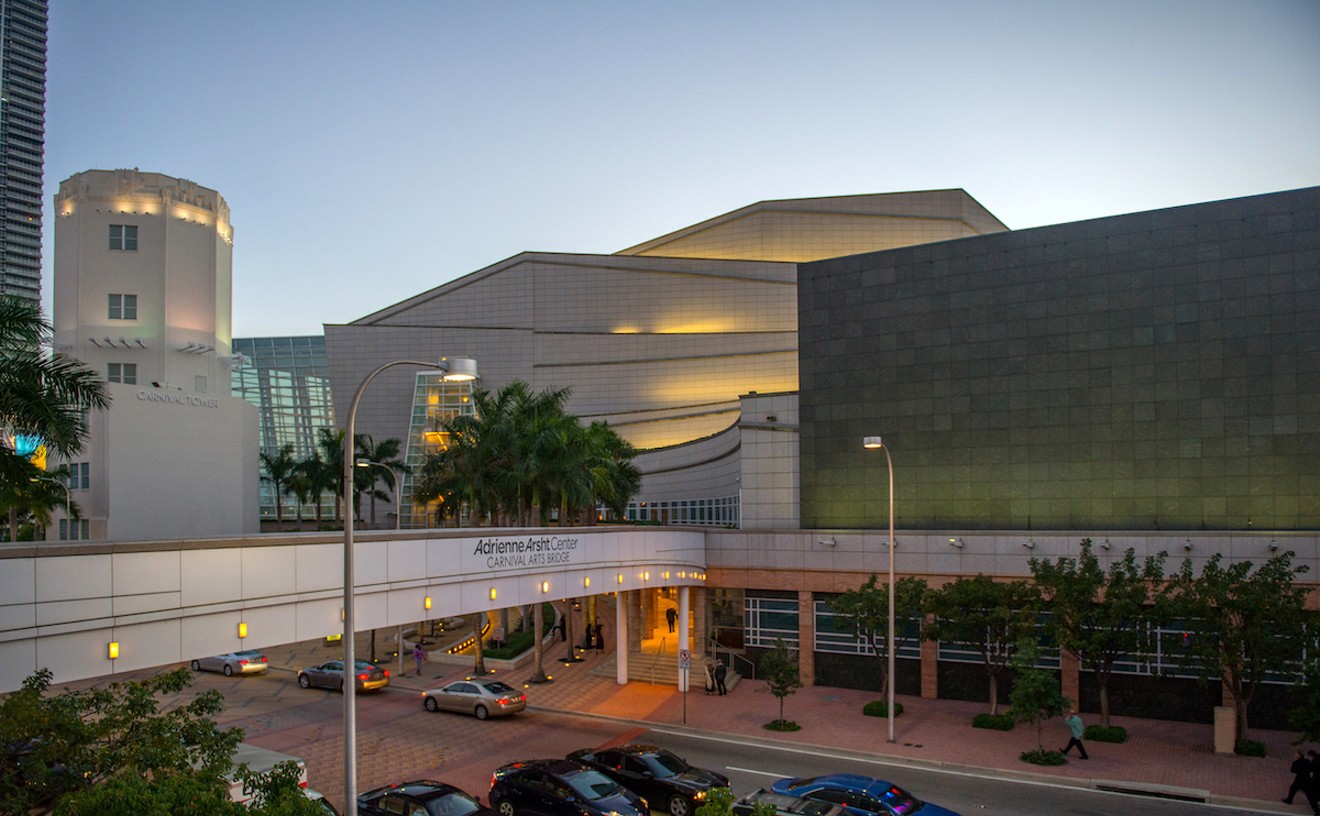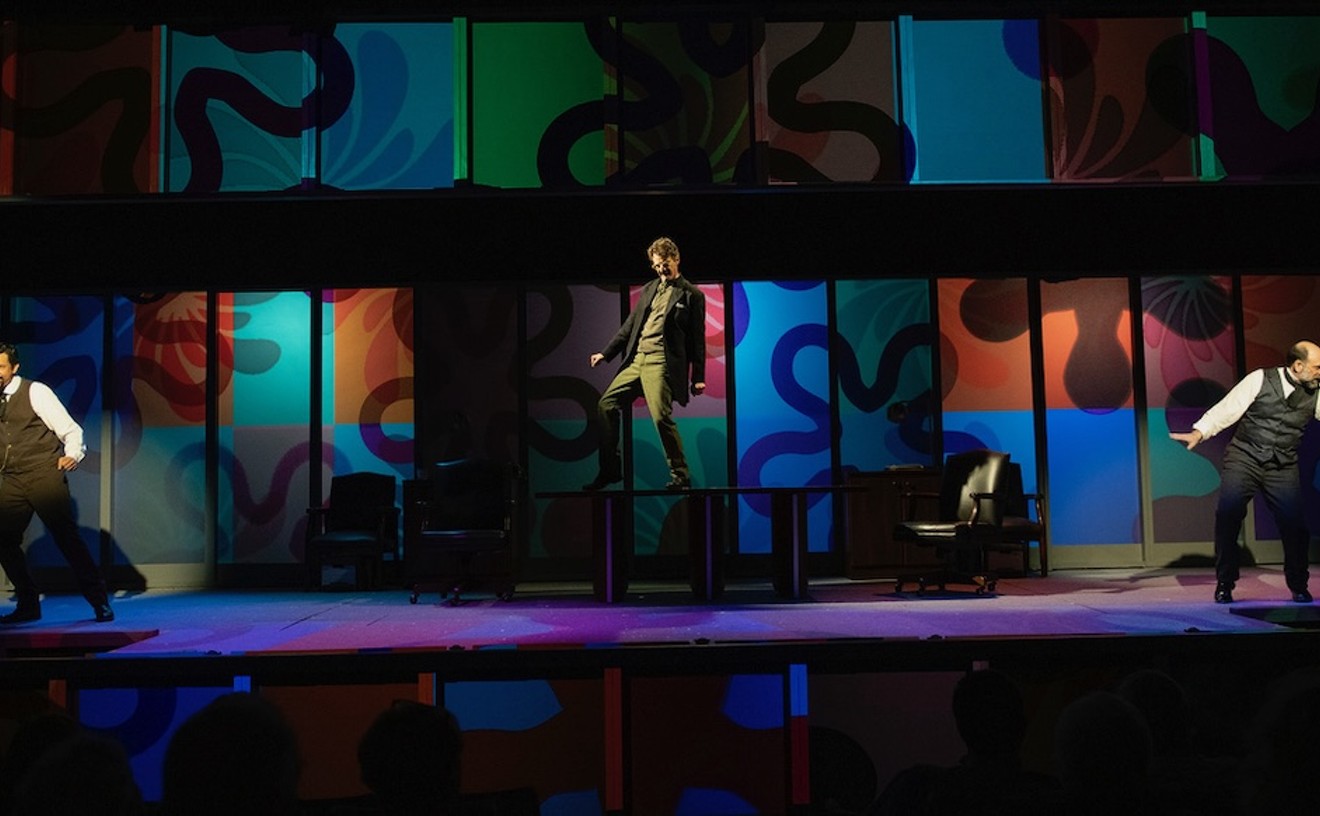It's tempting to grant this award to "the women of Ruined," because the production was such a vital showcase for talented, dynamic women of color, whose extraordinary sum could not be realized without each significant part. But if forced to single out one of them, we give the honor to Jade Wheeler, an actress best known for her work in the Washington, D.C. area whose regional breakthroughs at GableStage have been revelatory. Surely, nobody who witnessed her performance as a confident, scheming, buttoned-down legal aide in David Mamet's Race last summer could have anticipated the battered shell of a character she would play next in Ruined. As Sophie, she etched the show's most unforgettable portrait — the "ruined" woman of the title dispatched to Mama Nadi's (Lela Elam) wartime brothel and forced into service despite the fact that a bayonet had mutilated her vagina. The entire way Wheeler carried herself — from her limping gait to the careful combination of squeamishness and terror in her eyes whenever a brutish guerrilla pawed her — was of a heartbreaking piece, performed with tensile poise and an intelligent subtlety.
Best Supporting Actress
Jade Wheeler
Best Ensemble Cast
All New People

Sometimes a production can outstrip and transcend its source material. That's exactly what All New People did, creating something radically different from the show's initial London run — and, most observers agree, far better. Director Stuart Meltzer optioned this comedy from Scrubs creator Zach Braff hot off the presses and ran with it full bore, taking a script leaden with sitcommy archness and turning it into a caustically hilarious and endearing redemption song, thanks in large part to a cast so flawless it should be touring this show nationwide. Amy McKenna's manic, quirky, drug-induced real estate agent, Todd Allen Durkin's sexist fireman and erstwhile thespian, Betsy Graver's simple-minded hooker and aspiring musician, and Nicholas Richberg's suicidal straight man thrust into an impromptu loony bin had the kind of chemistry most directors hope for every time and enjoy only sporadically. Each of them displayed expert timing and the ability to reveal new depths of their characters with surprising nuance and conviction.
- 1300 Biscayne Blvd., Miami, 33132 Map
- 305-949-6722
- arshtcenter.org
Best Director
Joseph Adler

To say that Ruined — Lynn Nottage's searing drama about life in a shady bar during one of the Republic of Congo's many civil wars — contains a multitude of moving parts is an understatement. On a superlative scenic design that looked twice the size it actually was, Joseph Adler met and exceeded the requirements of this ambitious play during its GableStage production. He created a perpetual motion machine of busy bustle across the beautifully ramshackle sprawl, from the musicians performing onstage right to the pool tables and small outdoor setting on stage left. By loading the show with action on all sides, he successfully oversaw the illusion of real life — music and dance, laughter and leisure, dread and danger — under a soundtrack of machine-gun fire and falling bombs. But this masterful direction excelled in the micro as well as the macro, taking great care to inspire intense performances we've never seen before from the largest cast ever assembled at GableStage, including a top-form Lela Elam as the morally ambiguous whorehouse proprietor.
- 1200 Anastasia Ave., Coral Gables, 33134 Map
- 305-446-1116
- gablestage.org
Best Production from an Out-of-town Company
Death and Harry Houdini

The crux of Death and Harry Houdini is the titular magician's lifelong battle with death — his perpetual desire to cheat his demise. But beyond that, nothing about the story of this visiting production from the House Theatre of Chicago sticks out. The dialogue and thinly explored romance certainly won't win any awards. But what does impress is the spectacle. The House Theatre specializes in stylized, innovative theatrical experiments, where sound and design elements break new ground. Death and Harry Houdini, which launched the company in 2001 and is continually revived by popular demand, epitomizes its MO. It was a genuine magic show as much as a play, with Dennis Watkins, as Houdini, performing both close-up tricks and ambitious feats, from walking barefoot on a stream of broken glass to escaping a locked straitjacket, swallowing razor blades, and dangling in a booth of water. Video projection, smoke machines, stilt walkers, inspired choreography, colorful costumes, and fun audience participation further cemented an unforgettable sensorial experience.
- 1300 Biscayne Blvd., Miami, 33132 Map
- 305-949-6722
- arshtcenter.org
Best Production from a New Company
Three Sisters

The PlayGround Theatre's transformation from an ambitious children's theater to an ambitious adult theater — rechristened Miami Theater Center — should have surprised no one familiar with its previous work. But its debut production of Anton Chekhov's Three Sisters pulled so many avant-garde surprises on its audience that it somehow honored the 1900 text while modernizing it and streamlining the theatrical experience to new heights. The unpredictable, period-spanning costumes, up-close addresses to the audience, modern slang, and music translated Chekhov's timeless words into a more contemporary context. And while choreographing a staggering 17-member cast, director Stephanie Ansin used every inch of the largely unadorned industrial-style space, from the aisles to a sprawling three-room set design, parts of which could be accessed only through an intimate seating area that rotated on a pivot. The complicated and airy mise en scène resulted in some occasional problems with spectators' sight lines, but a spectacular experiment beats out a safe, polite success any day.
- 9806 NE Second Ave., Miami Shores, 33138 Map
- 305-751-9550
- mtcmiami.org
Best Set Design
I Am My Own Wife

Everybody on the South Florida theater scene knows Michael McKeever can write. His plays scoop up statuettes every awards season. But this production heralded a new revelation for the prolific actor/playwright: He can design breathtaking sets, too. As aesthetically innovative as it was thematically expressive, his vision for the museum of transvestite German antiquarian Charlotte von Mahlsdorf was that of an oversized dollhouse, compartmentalized into segments like much of the character's fascinating biography. The objects themselves exuded a murky and sepia-toned nostalgia: A gramophone and accompanying painting of Nipper the dog, a stately grandfather clock, a misty chandelier. Working in inseparable tandem with Luke Klingberg's lighting design — which elevated the set to dramatic heights of florid expressionism — McKeever's construction lurked like a behemoth behind Tom Wahl's multi-character tour de force, a constant reminder that his/her past was always present.
- 1300 Biscayne Blvd., Miami, 33132 Map
- 305-949-6722
- arshtcenter.org
Best Lighting Design
The Turn of the Screw
When it comes to South Florida theatergoers — many of whose bedtimes are, let's just say, on the early side — there's always a risk of blanketing a show in such extended darkness that patrons are already off to see the sandman by the end of Act I. But Margaret Ledford, who also directed this assured production of The Turn of the Screw, took that risk and ran with it, thriving on darkness and the perennial sense of unease its presence implies. Never seeing the full picture is vital to The Turn of the Screw's success as a psychological mystery, and Ledford's decisions created a shrouded atmosphere that would be attractive to any wayward ghost. The show looked like Henry James' novella reads, with the sense of harrowing visions obscured by unreliable candlelight. We saw into the soul of Katherine Amadeo's frightened governess through the light that isolated her visage, suggesting, to paraphrase James, the inner chamber of her dread.
- 11300 NE Second Ave., Miami Shores, 33161 Map
- www.barry.edu/fine-arts/
Best Theater for Drama
GableStage at the Biltmore

It's been another banner year for Coral Gables' theatrical powerhouse, GableStage, with Joseph Adler and company mounting superlative regional productions of some of Broadway's best and brightest plays of the past five years. It was a period that included a caustic David Mamet legal drama about a taboo subject (Race); an unforgettable foray into a Congolese brothel (Ruined); a dynamic study of S&M, literature, and gender relations (Venus in Fur); a tender and hilarious buddy comedy about a grieving bicyclist and his Marxist grandmother (4,000 Miles); and, most recently, a provocatively titled play about an unpredictable love triangle (Cock). All of that plus Hamlet, in a version of the antique masterpiece that felt as fresh and vital as the rest of the recent works. Casting-wise, Adler never rested on his laurels; rather than employ actors familiar with the Biltmore floodlights, he went with a number of breakthrough discoveries and risky decisions that paid off, fostering a new generation of talent while enriching audiences with hot-button plays they wouldn't see anywhere else.
- 1200 Anastasia Ave., Coral Gables, 33134 Map
- 305-446-1116
- gablestage.org
Best New Theater
Miami Theater Center

When Miami Shores' PlayGround Theatre became the Miami Theater Center (MTC) in June 2012, it didn't just get a name change. It got a new mission: to offer quality theatrical performances to Miami-Dade communities north of Wynwood. And from the beginning, MTC has succeeded at exactly that. Its first show, Chekhov's Three Sisters, was ambitious in both staging and content. The chilly Russian tale of three women's dashed dreams doesn't exactly scream Miami. But MTC founder and artistic director Stephanie Ansin's masterful staging, including seating on a platform that swiveled around the stage, literally moving its audience, earned rave reviews. They haven't stopped since. And that's even more impressive, given MTC's proclivity toward difficult subject matter. This year, MTC has also staged Hate! An American Love Story, addressing the important but challenging issue of bigotry, and Pie Solo, the local dancer and choreographer Pioneer Winter's one-man show in which he appears in a jock strap and performs a tap dance while sitting on a toilet. The theater's partnership with O Cinema, bringing indie and classic movies to Miami Shores, is just icing on the cake. Miami Theater Center has proven that North Miami-Dade, too, can support the edgier side of the performing arts.
- 9806 NE Second Ave., Miami Shores, 33138 Map
- 305-751-9550
- mtcmiami.org
Best World Premiere
A Man Puts on a Play
Antonio Amadeo, local actor and impresario of the Naked Stage in Miami Shores, thrives on producing unique experiences at his 43-seat black-box theater and uses the space's limitations to his artistic advantage. This was never more apparent last year than in A Man Puts on a Play, Amadeo's debut as a playwright. The self-reflexive meta-play was a show like no other, a touching familial dramedy preceded by a semi-improvisatory exercise in set-design construction. In the first act, like magic, the ensemble cast transformed a bare stage before the audience's eyes into a fully functioning attic set, bolstered by their own light-hearted quips, endearing mistakes, and a potent jazz soundtrack. In the second act, whose dialogue was seen being rehearsed in the first, a simmering conflict between brothers played out in the now-constructed set. Anyone who didn't see this work missed an ingeniously sloppy experiment that revealed how at least some of the theatrical sausage is made.
- 11300 NE Second Ave., Miami Shores, 33161 Map
- www.barry.edu/fine-arts/





